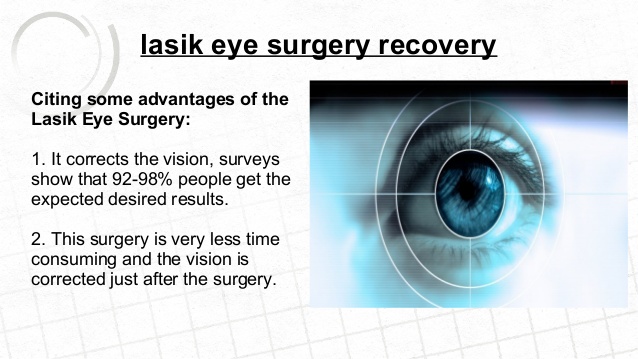LASIK & Laser Eye Surgery: A Complete Guide
LASIK & Laser Eye Surgery: A Complete Guide
Refractive surgery is the term used to describe surgical procedures that correct common vision problems (nearsightedness, farsightedness, astigmatism and presbyopia) to reduce your dependence on prescription eyeglasses and/or contact lenses.
Currently, a laser procedure called LASIK (LAY-sik) is the most popular refractive surgery performed in the United States. But there are other types of refractive surgery — including other laser procedures andintraocular lens procedures — that might be an even better choice for you, depending on your needs.

The articles below will help you learn more about your surgical options so you can better discuss them with your eye doctor if you are interested in elective vision correction surgery.
LASIK is a surgical procedure that uses a laser to correct nearsightedness, farsightedness, and/or astigmatism. In LASIK, a thin flap in the cornea is created using either a microkeratome blade or a femtosecond laser. The surgeon folds back the flap, then removes some corneal tissue underneath using an excimer laser. The flap is then laid back in place, covering the area where the corneal tissue was removed.
With nearsighted people, the goal of LASIK is to flatten the too-steep cornea; with farsighted people, a steeper cornea is desired. LASIK can also correct astigmatism by smoothing an irregular cornea into a more normal shape.
If you are considering LASIK eye surgery, your first step is to choose a good LASIK surgeon who can evaluate whether LASIK is right for you. Your LASIK surgeon will examine your eyes to determine their health, what kind of vision correction you need, and how much laser ablation (corneal tissue removal) is required. The doctor will also ask about any health conditions that may disqualify you altogether for LASIK surgery.
If you are not a candidate for LASIK, you may qualify for another laser eye surgery such as PRK (similar to LASIK but without the flap), LASEK, or epi-LASIK. There are also non-laser vision correction procedures. Your prescription and eye structure will be considered to help determine which procedure is best for you.
LASIK is an outpatient procedure, so you don't have to stay at the surgery center overnight. The LASIK surgeon uses a computer to adjust the laser for your particular prescription. You will be asked to look at a target light for a short time while the laser sends pulses of light to painlessly reshape your cornea. The actual LASIK surgery usually takes less than five minutes.
How Is LASIK Surgery Performed?
First, your eye surgeon uses either a mechanical surgical tool called a microkeratome or a femtosecond laser to create a thin, circular "flap" in the cornea.

Want a visual? View our LASIK slide show!
The surgeon then folds back the hinged flap to access the underlying cornea (called the stroma) and removes some corneal tissue using an excimer laser.
This highly specialized laser uses a cool ultraviolet light beam to remove ("ablate") microscopic amounts of tissue from the cornea to reshape it so it more accurately focuses light on the retina for improved vision.
For nearsighted people, the goal is to flatten the cornea; with farsighted people, a steeper cornea is desired.
Excimer lasers also can correct astigmatism by smoothing an irregular cornea into a more normal shape. It is a misconception that LASIK cannot treat astigmatism.
After the laser reshapes the cornea, the flap is then laid back in place, covering the area where the corneal tissue was removed. Then the cornea is allowed to heal naturally.
Laser eye surgery requires only topical anesthetic drops, and no bandages or stitches are required.